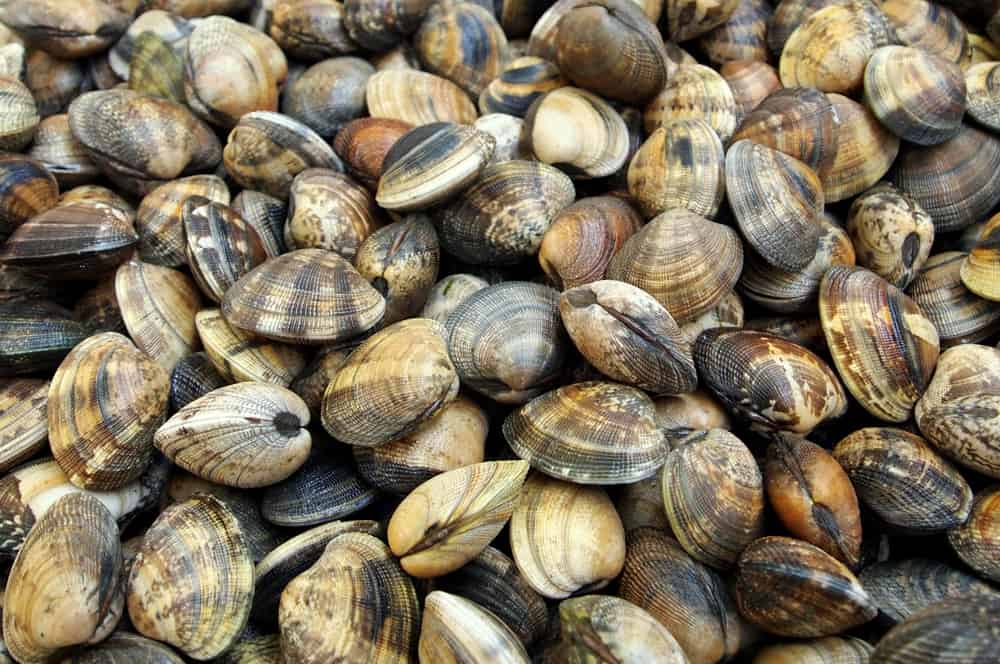If you ever spent a day at the beach and waited long enough to witness a low tide, you could find various seashells and even see clams buried halfway in the sand. And, if you tried to take them, you might’ve noticed that they are still alive, with their foot still trying to grasp for the sand.
But, clams and other mollusks are found not only in oceans, seas, lakes, and rivers. They are a popular aquarium addition, and many fans of marine animals keep clams as pets. If the idea of having a clam pet sounds interesting, keep reading to learn more about these fascinating creatures!
Facts About Clams
Clams are a type of bivalve mollusks. This means that their shells consist of two equal parts connected by a hinge joint and an external or internal ligament. There are more than 15.000 species of clams.
These bivalves can live in fresh waters and salt waters from all around the world, Europe, North America, South America, Asia, etc… They attach themselves to the sand or mud using a fleshy foot. Some clams attach themselves permanently to the substrate with so-called byssal threads.
Pearl Production
Clams are also capable of producing pearls. When a foreign particle, such as a grain of sand or small stone enters the space between the clam’s shell and its body, the clam starts producing secretion to cover the foreign object. Eventually, that object becomes covered in layers and layers of this secretion and thus becomes a pearl.
Determining The Clam’s Age
The age of clams can be determined in a similar manner as the age of trees. Simply count the number of growth lines on its shell, and you will be able to estimate how old that particular clam is.
Some clam species live for up to 1-2 years, while others live for 10-12 years. But still, some clams and their shell growth inevitably proved that they lived for more than 500 years.
Breathing
Clams can’t breathe out of the water. However, they can still spend weeks and even months out of the water when there is a drought. They do it by completely closing their shells and stopping all of the processes that aren’t essential.
Once that clam gets surrounded by water again, it will open up to take as much oxygen as possible and to get rid of the waste. After half a day, it will return back to its normal state, as if nothing has happened.
Reproduction
Clams reproduce sexually. Male clams release their sperm into the water. The sperm gets sucked in by the female clam’s siphons, and it fertilizes the eggs. The eggs remain in the female clam until they hatch and the larvae develop.
Some clams are hermaphrodites, and when those species reproduce, they can choose whether they will act as a female or as a male.
The Anatomy Of Clams
Although they look so simple, clams have a complex external and internal anatomy. Their shells are made of two parts that are connected with a hinge and ligament. Each shell has a beak called an umbo. This is the oldest part of the shell, from where the rest of the shell grew.
Inside, the soft clam’s body has a mouth, teeth, gills, stomach, adductor muscles, body mantle, foot, and excurrent and incurrent siphons. Clams also have complex organs, including the liver, intestines, kidneys, and gonads.
Young clams are really small, with a size of less than a few inches. As they grow older, the clams also become bigger, and some giant clams can grow more than 4 feet.
Different Types Of Clams
There are clam species that evolved for life in freshwater, while others specialized for life in salt waters. Some of these clam species are edible by humans, while some of them are not. We’ll take a look at some of the most popular clam species. Let’s start with freshwater ones:
Freshwater Clams:
1. Fingernail clams
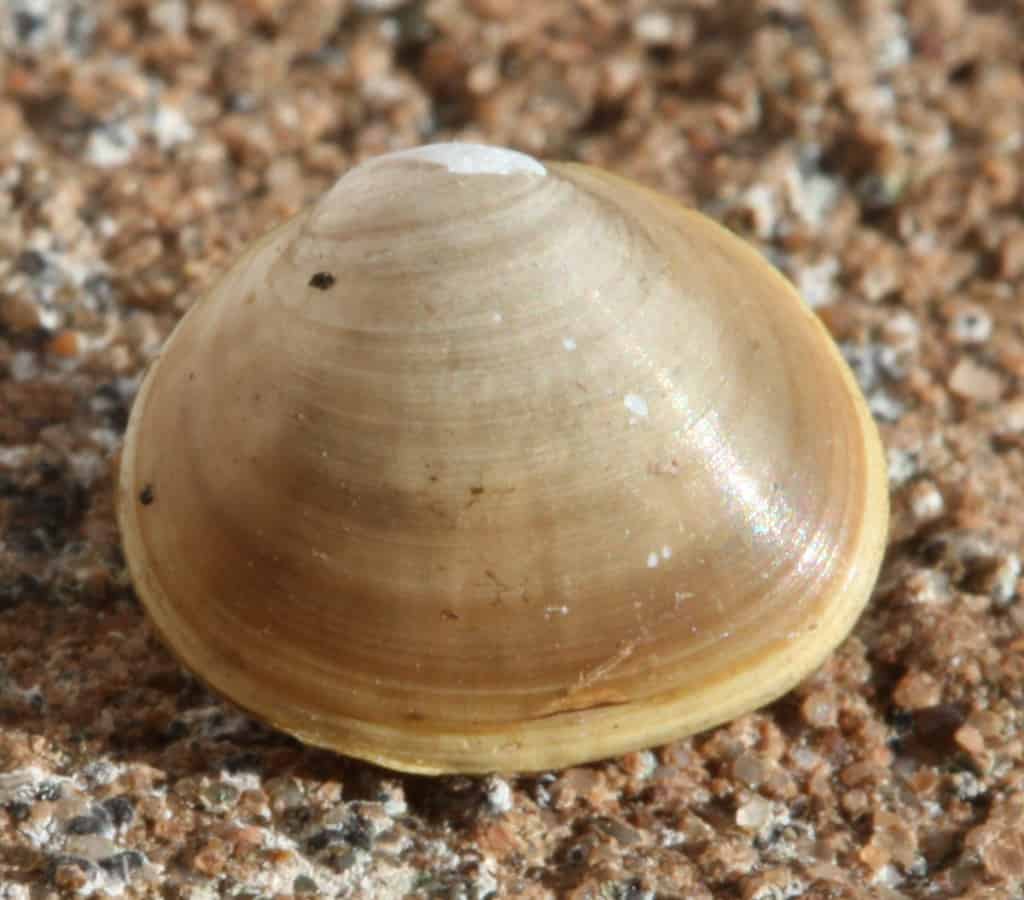
These freshwater clams are usually found in human-made and natural ponds. They got their name because of their size, as the largest specimens reach only 1 inch in diameter. Fingernail clams are a common food source for pond fish.
2. Corbicula
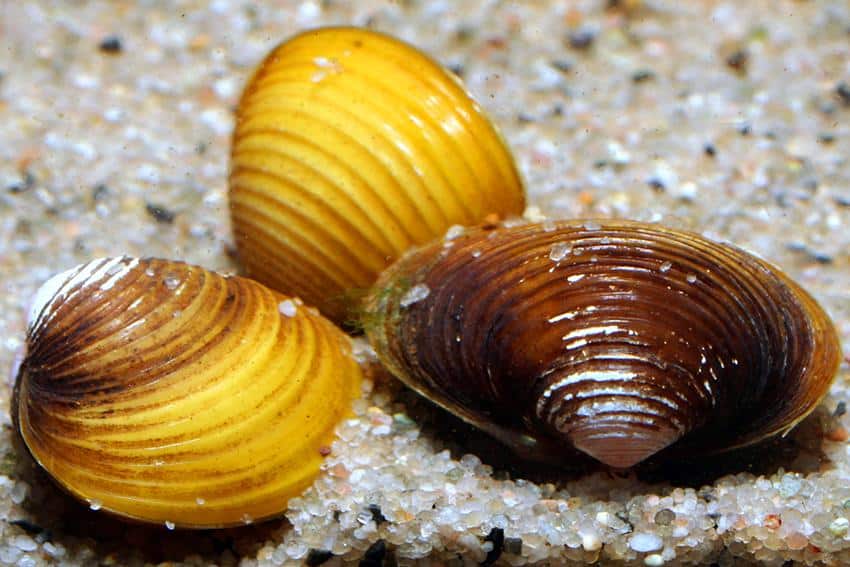
Corbicula clams thrive in flowing and standing water with lots of calcium. They came to North America from Asia in the early 1900s. Since then, these mollusks spread uncontrollably. They are efficient in filtering the water from any food particles, as they feed at a much higher rate than other mollusks.
Saltwater Clams:
1. Quahog
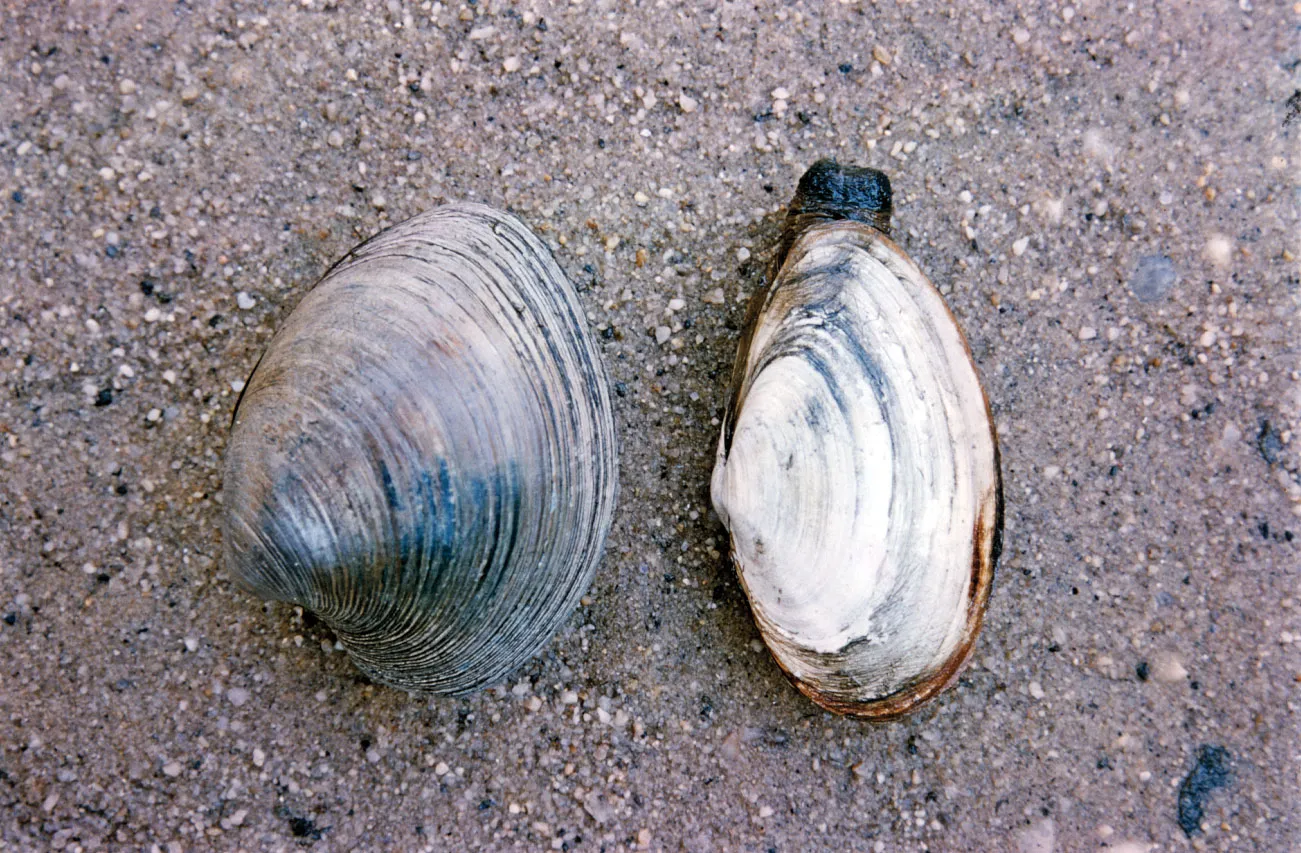
One of the most popular clams, quahog was hunted for food by native American tribes living on the East Coast. Quahogs are hunted while at various stages of growth, and they are referred to under different names: littleneck, topneck, cherrystone, and chowder.
2. Steamers (Soft shell clams)
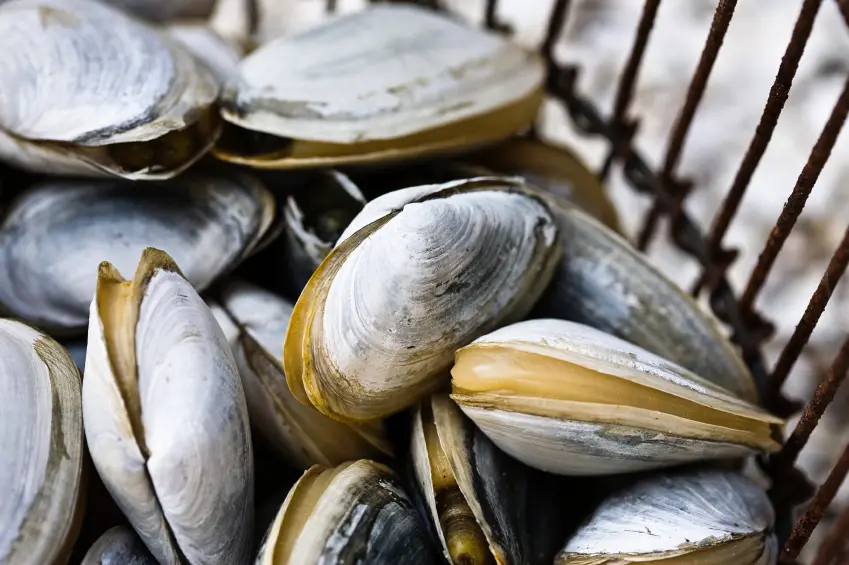
These clams have brittle shells and you can find them along Northeast Coast, Maine, Ipswich, and Massachusets. They can be fried shucked or whole, and they are considered a delicacy when eaten with butter.
3. Pacific and Atlantic razors
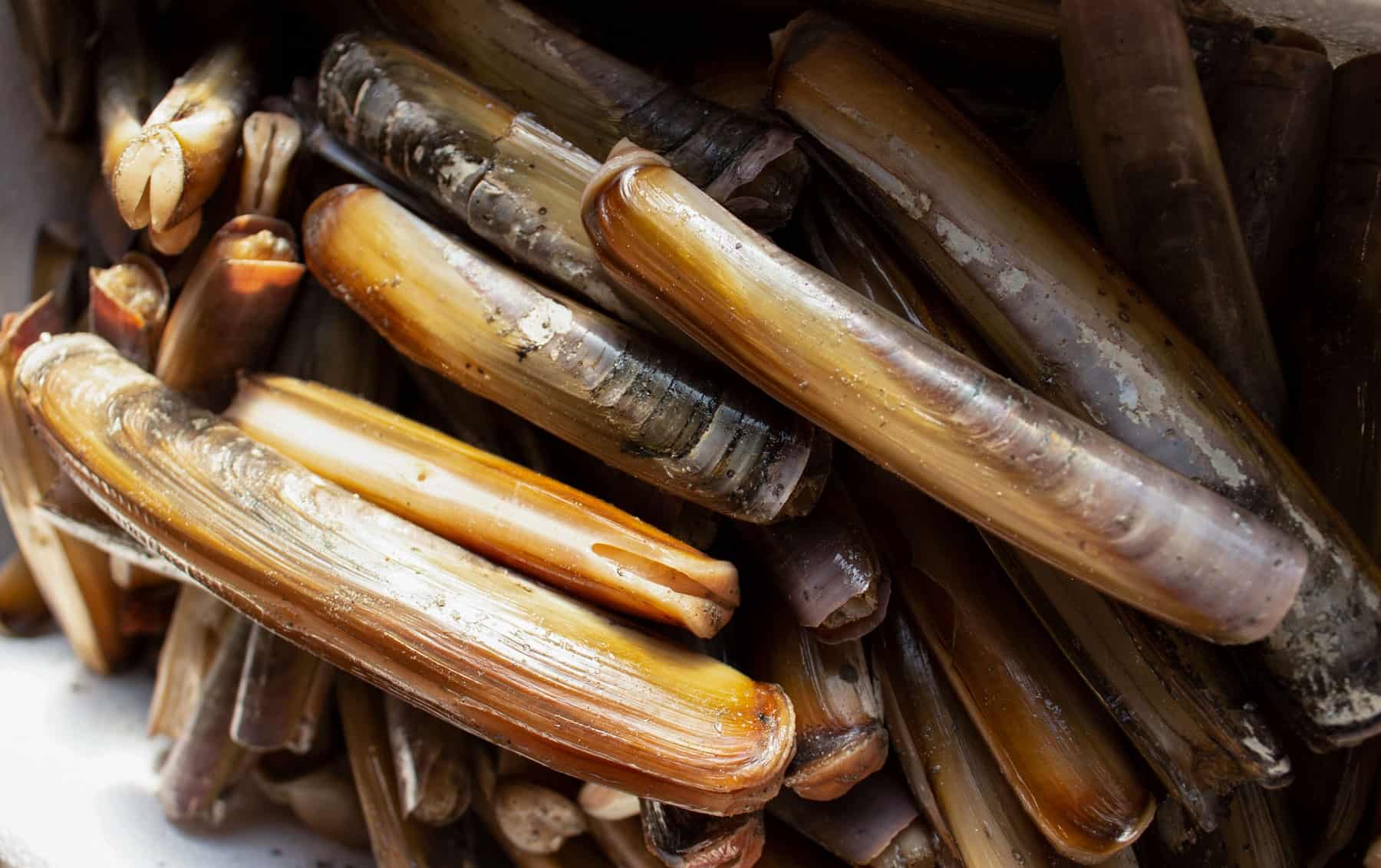
Pacific and Atlantic shells got their name because of their prolonged, razor-shaped bodies. As their names suggest, they can be found in the Pacific and Atlantic oceans. They are also popular seafood.
What Do Clams Eat?
Since we touched on the subject of eating clams, let’s take a step back and look at clam’s diet first. Clams are filter feeders, which means they feed on plankton and organic matter that is tiny enough to go through their filtration system.
Clams are also omnivores that will feed on anything that’s small enough. However, they are not gluttonous eaters and they thrive on small amounts of food.
In The Wild
Both freshwater and saltwater slams feed on phytoplankton, algae, zooplankton, microorganisms, and other suspended particles of organic matter that can pass through their filter-feeding system.
Clams will even eat the particles from decomposing plants or animals, and they also feed on particles of excrement from other aquatic animals.
Saltwater clams feed during the high tide when they get completed covered in the water. Freshwater clams are usually fully submerged in the water all the time, so they can always feed.
When the winter comes, clams shift their focus on surviving the freezing temperatures, so they dig themselves deeper than usual, remaining completely buried until the warmer weather arrives. They eat almost nothing during this period.
In The Captivity
Feeding clams in captivity is simpler than it might look at first. For a start, you can buy clam food from your local pet store. It is usually labeled as sinking algae wafers.
You can also make your own clam food mixture that will be full of proteins. Simply blend red or fish meat until it is pureed and add it in small amounts into the tank’s water where your clams live.
Clams will thrive the most in already established aquariums, especially if those aquariums are filled with fish. In such fish tanks, clams can feed on fish excrement and on the leftover fish food.
However, you still need to feed your clams occasionally, to make sure that they get enough nutrients, especially if you notice them growing. Apart from algae wafers, you can feed your clams with frozen coral foods, diced fish, frozen planktons, octopus food, etc.
What Do The Baby Clams Eat?
Baby clams and clams smaller than 1-2 inches need to be fed on a daily basis because they are still too small to get enough nutrients from their tank.
How Do Clams Get Food?
Clams are capable of slowly moving with their foot to find a place more optimal for feeding. Once they find such a place, clams bury themselves, but not too deep, in order to leave their intake siphon free to suck in the food particles.
Those food particles, along with water, go through the siphon to the clam’s gills. There, the water passes through the gills, while food particles remain trapped in a sticky mucus that moves to the labial palps and to the mouth.
This process is what we call filter feeding. Some clams, however, develop a symbiotic relationship with zooxanthellae algae. The algae live in the clam’s mantle, and the clam feeds the algae with nitrogen. In return, the algae give various nutrients to the clam.
What Are The Predators Of Clams?
Clams are an important part of the food chain. Apart from feeding on small particles and organisms, they are a valuable food source for many other animals.
Apart from being hunted by humans, clams are eaten by oyster drills, crabs, frogs, octopuses, snails, eels, squids, pufferfish, and even birds such as crows.
Conclusion
Clams are interesting animals, burying themselves in the sand and helping filter and clean the waters from various particles. Although they look simple and plain at first sight, their shells hide a complex creature that’s even capable of producing beautiful pearls.
Clams will basically eat anything that’s small enough to go through their siphons, and that makes them low maintenance even when in captivity. They feed on planktons, bacteria, microorganisms, and even fish excrement.
If you are a fish tank owner, does your fish tank contain clams? If yes, how would you describe clams, as low-maintenance, or fussy and demanding? Write in the comments!
